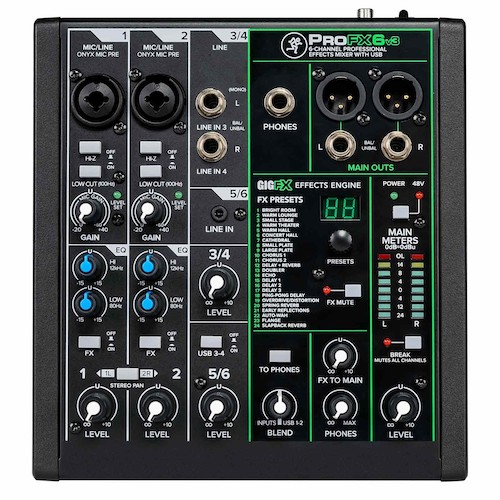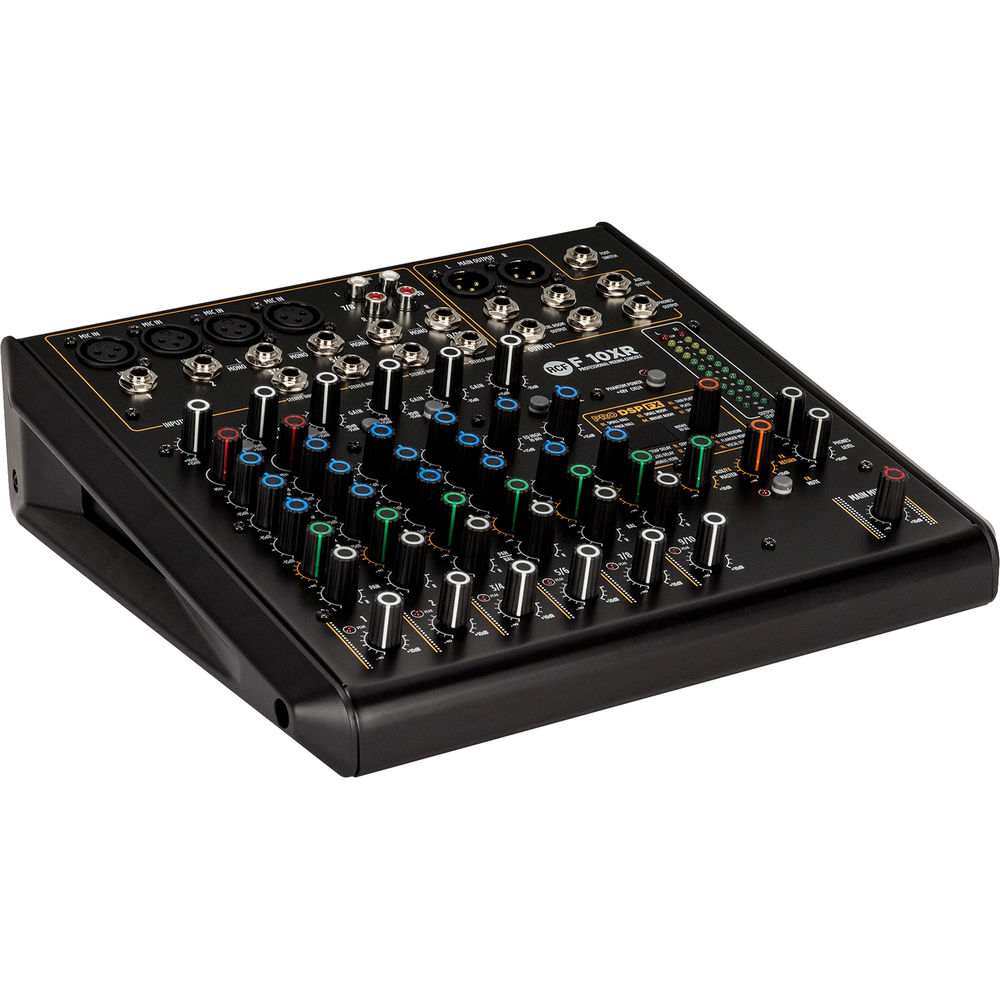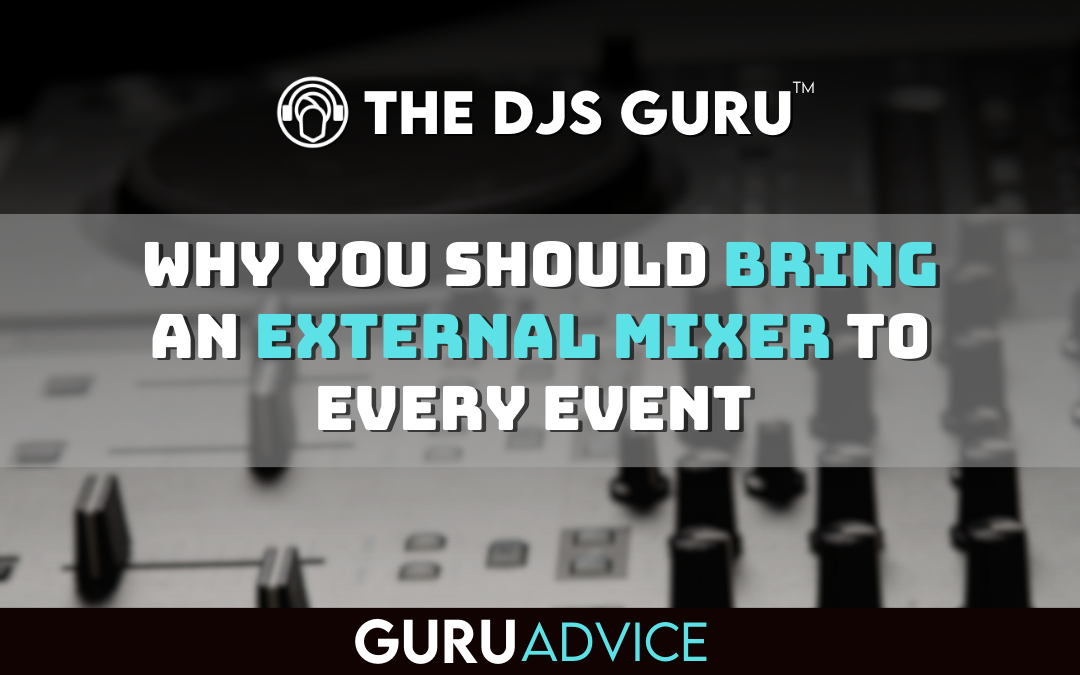As DJs, we carry a lot of equipment and tools to help our events run smoothly. Some of these tools are obvious – DJ controllers, speakers, and cables to name a few. One piece of gear that often gets overlooked, however, is the external mixer. While it’s true that our DJ mixers and controllers have more than a few inputs and outputs, there are many benefits to carrying an external mixer to your events. From greater headroom and better EQ to increased flexibility, an external mixer can make your events easier and more professional. In this article, we’ll talk about a few of the many benefits of an external mixer. Then, we’ll share a couple of our favorite external mixers for DJs.
Here are the top 5 reasons why we think DJs and event professionals should bring an external mixer to every event.
1 – More Diversity of Inputs
One of the biggest benefits of an external mixer is an increased number and diversity of inputs. Most DJ controllers will offer one or two “aux” inputs along with one or two microphone inputs. Most of these times, the aux input is nothing more than an RCA connection. The second mic input, if present, is usually a 1/4″ jack instead of the more professional XLR.
With an external mixer, the sky is the limit on the number and type of inputs available. Even a modest 6, 8, or 10-channel mixer will usually have multiple XLR microphone inputs, balanced TRS inputs, and even additional RCA inputs. Some external mixers have switches allowing you to toggle the sensitivity of the input for mic or line-level signals. They may even offer an instrument input for electronic guitars or basses. Having these extra inputs allows DJs to plug in backup music sources, musicians, and more!
2- Greater Headroom
Something that many newer DJs don’t consider when it comes to an external mixer is the additional headroom that comes with it. If you don’t know, headroom is a term to describe the amount of available gain (amplification) a mixer can provide before the sound becomes distorted. DJ mixers can be limited in the signal strength they output, especially when compared to external mixers due to the low-quality components used in almost all of them. Having more headroom available equals a stronger signal to the speakers when you’ve got a quiet input such as a timid vocalist or low-output instrument. This stronger signal can be maintained at a lower level, meaning less noise is introduced, resulting in clearer sound.
3- Vocal FX and Compression
Over the past few years, more and more external mixers are including onboard effects generators. These effect generators can create common vocal effects like reverb and echo without the need for additional equipment. If you’re a DJ who offers karaoke, this can go a long way in improving the final sound of your microphones. Musicians included in your mix also benefit from built-in effects. Additionally, some external mixers even included a compressor. This invaluable audio tool functions to smooth out the volume level of your inputs, raising the low points and lowering the high points for a more even sound. A compressor is a super easy way to level up your production value.
4- Better EQ
Let’s be honest – apart from mixing tracks, the simple 3-band EQ on most DJ controllers is pretty useless. With an external mixer, however, DJs can gain more control over their sound. Advanced users can use multi-band EQs on an external mixer to notch out problem microphone frequencies, reducing feedback. A more fine-tunable EQ can also correct for difficult rooms where certain frequencies are emphasized or buried due to reflections.
5- More Flexibility in Emergencies and Live Streaming at home
Lastly, an external mixer can be an extremely valuable tool in a gig emergency or at home if you want to live stream to the world. With all inputs, microphones, and backups hooked up to your DJ controller, you’re in the precarious position of having a single potential point of failure in your system. Should your laptop or controller go down, an external mixer can come in a clutch with a backup music source. With a small MP3 player or iPod handy and plugged in, DJs can easily switch over to a second music player should the worst happen.
Want to live stream at home? If you choose a USB mixer like some of our favorites below you can use your external mixer both on gigs and at home as well!
2 of Our Favorite Mixers for Event Professionals
Having explained some of the biggest reasons to pick up an external mixer, we want to finish by highlighting two of our favorite mixers. Both of these are packed with features and would be fantastic options for the working DJ.
Mackie ProFX6V3

Order the Mackie ProFX6V3 External Mixer with code SAVE at DJSupplyStore.com
RCF F-10XR

Order the RCF F-10XR External Mixer with code SAVE at DJSupplyStore.com


